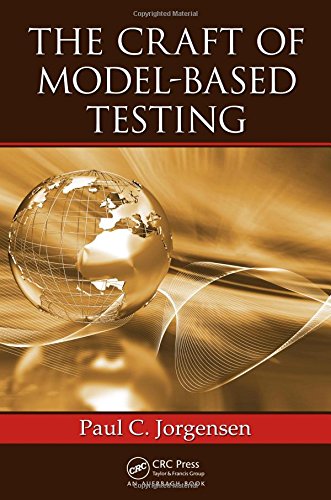

Most ebook files are in PDF format, so you can easily read them using various software such as Foxit Reader or directly on the Google Chrome browser.
Some ebook files are released by publishers in other formats such as .awz, .mobi, .epub, .fb2, etc. You may need to install specific software to read these formats on mobile/PC, such as Calibre.
Please read the tutorial at this link: https://ebookbell.com/faq
We offer FREE conversion to the popular formats you request; however, this may take some time. Therefore, right after payment, please email us, and we will try to provide the service as quickly as possible.
For some exceptional file formats or broken links (if any), please refrain from opening any disputes. Instead, email us first, and we will try to assist within a maximum of 6 hours.
EbookBell Team

4.3
28 reviewsIn his latest work, author Paul C Jorgensen takes his well-honed craftsman’s approach to mastering model-based testing (MBT). To be expert at MBT, a software tester has to understand it as a craft rather than an art. This means a tester should have deep knowledge of the underlying subject and be well practiced in carrying out modeling and testing techniques. Judgment is needed, as well as an understanding of MBT the tools.
The first part of the book helps testers in developing that judgment. It starts with an overview of MBT and follows with an in-depth treatment of nine different testing models with a chapter dedicated to each model. These chapters are tied together by a pair of examples: a simple insurance premium calculation and an event-driven system that describes a garage door controller. The book shows how simpler models―flowcharts, decision tables, and UML Activity charts―express the important aspects of the insurance premium problem. It also shows how transition-based models―finite state machines, Petri nets, and statecharts―are necessary for the garage door controller but are overkill for the insurance premium problem. Each chapter describes the extent to which a model can support MBT.
The second part of the book gives testers a greater understanding of MBT tools. It examines six commercial MBT products, presents the salient features of each product, and demonstrates using the product on the insurance premium and the garage door controller problems. These chapters each conclude with advice on implementing MBT in an organization. The last chapter describes six Open Source tools to round out a tester’s knowledge of MBT. In addition, the book supports the International Software Testing Qualifications Board’s (ISTQB®) MBT syllabus for certification.